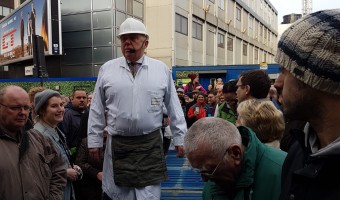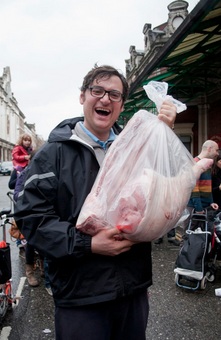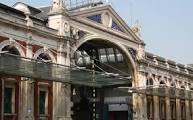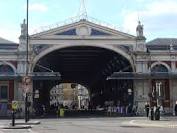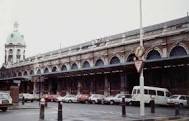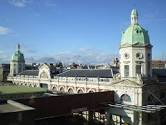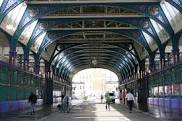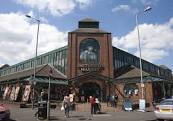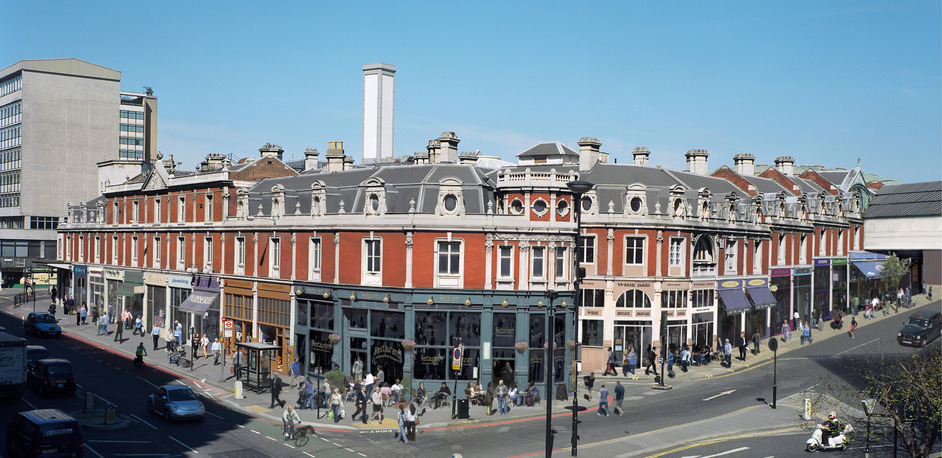I visited the market as part of walking tour and was delighted to discover many, many hidden gems at this fascinating scene of London's many historic moments
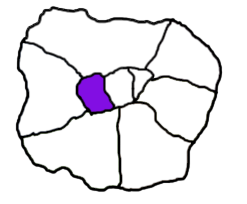
 PIN
Smithfield Market
PIN
Smithfield Market
More than just a meat market
Smithfield or its official name, London Central Markets is the largest wholesale meat market in the UK and one of the largest of its kind in Europe. Located within the Square Mile of the City of London, it is housed in three listed buildings.
It is a place packed with history. There has been a livestock market on the site for over 800 years and yet it is modern with its state of the art facilities for the receiving, storing and despatching of meat and poultry.
The Market Today
Today, Smithfield Market is over 140 years old, but on the site for almost one thousand years is a fully EU approved wholesale market.
It has seen many changes and yet continues to shift and evolve with each stall meeting the latest hygiene regulations and adapting to changes in food fashions with the same efficiency, good humour and elegance it has shown throughout the centuries. For the Market is not just a series of buildings, but is about the people who bring it to life: the managers, the traders, the buyers and the visitors.
Market History
Smithfield’s livestock market grew in size and significance over the centuries until by the end of the 18th century, the number of animals being brought into London from around the country was causing mayhem in the area encroaching on the nearby streets and houses.
In 1852, the Smithfield Market Removal Act was passed relocating the livestock market to a new open site north of Islington. Plans were immediately put into place to start a new market in the area, which would specialise in cut meat.
The arrival of the railways had already brought about an amazing revolution in the movement of animals / animal products. Previously fresh meat could only be transported on the 'hoof' (by foot), which took time and was wasteful, as it was reckoned that each cow lost about 20 pounds in weight on a 100 mile walk. By 1849 almost one million of the animals sold at Smithfield came to London by rail.
So when plans for the new market were drawn up, they also included an underground area where meat could be unloaded from the trains. However, it needed an Act of Parliament to erect the new buildings, which were acquired by the City of London Corporation in 1860 and the City Architect, Sir Horace Jones, was charged with designing the new market. Work began in 1866, the first stone was laid in 1867 and the whole project completed a year later – a vast cathedral-like structure of ornamental cast iron, stone, Welsh slate and glass. It was a place full of light and air consisting of two main buildings linked under a great roof and separated by a central arcade, the Grand Avenue.
The opening ceremony on 24 November 1868, headed by the Lord Mayor of London was a grand ceremony and banquet attended by 1200 guests with music by the Grenadier Guards and lavish feasting on “boars’ heads and barons of beef” (allegedly to have originated when Henry VIII was served a spit roasted double sirloin of beef and was so taken by the roast that he dubbed it accordingly). The toast was “tolls to the Corporation, cheap meat for the people and fair profits to salesmen.” Very soon afterwards, four more buildings were added. Of these, only the Poultry Market (originally opened in 1875) is still in use today.
Despite the first imports of frozen meat from Australia, New Zealand and South America in the 1880's, Smithfield had established itself as the premier meat market which it still is to this day. The sailing of the Dunedin (ship) in 1882 from New Zealand with only one out of over 5,000 carcasses sold at Smithfield condemned after the three month journey was truly incredible and pioneering.
During the Second World War, the market was closed for business. It was used mainly for storage and space for an army butchers’ school. Although there was bomb damage to some of the buildings, the majority remained unscathed.
However, the original Poultry Market building was destroyed by a major fire in 1958. A new building was commissioned at a cost of £2 million and completed in 1963. While unremarkable from the outside, inside it is a feat of engineering: in 1963, its domed roof was the largest clear spanning dome roof in Europe – all 225 feet of it.
In the 1990s, the market was modernised and upgraded to meet new EC regulations – this included the construction of new sealed loading bays, a new automated overhead meat rail system, new stalls and chiller rooms – all inside Grade 2 Listed Buildings. The underground area, no longer the railway sidings, became a car park.
Tags
- History
- , Culture
- , Westminster
- , Downtown Westminster
Shared Collections
Events
Location
Smithfield Market, 225, , Central Markets, , EC1A 9LH (View on Google Maps)Famous meat market
FREE
Recent Reviews
Reviewed by Peter 9 years ago
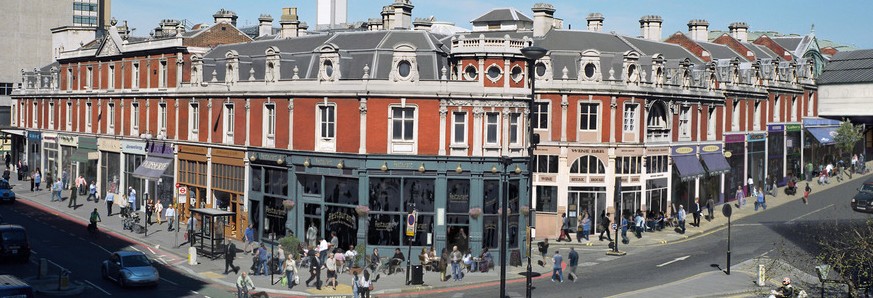


 Facebook
Facebook Twitter
Twitter Tumblr
Tumblr Google+
Google+ Pinterest
Pinterest LinkedIn
LinkedIn






